As young people are always ‘on’ through cell phones and social media, radio should be always there on mobile screens and smartphone apps, digital & mobile radio expert Fred Jacobs says.
Based in Detroit, Michigan, Jacobs runs a media research and consultancy company (including an excellent blog) around digital strategies and mobile applications for radio, in which also his brothers Paul and Bill are involved. In this interview, we’ll pick Fred’s brain about how to keep radio relevant by attracting a new generation of listeners in this social and visual world.
“Music discovery is really important”

Being a music guide for (young) listeners is one of radio’s unique selling propositions (photo: Flickr / remolacha.net)
Create a listener community
While radio still has a large audience – even if (especially young) people are spending less time with it – our medium is competing with (commercial-free) music services such as Spotify and Pandora, apart from today’s whole Internet & social media addiction. Fred Jacobs (photo below) thinks that some stations are doing well in social media: “Some personalities have an ability to connect socially. Other efforts are a bit more clumsy and selly, like Hey! At 2:15 we’re giving away Katie Perry tickets! Click here.” He feels like our industry can still learn a lot about online platforms: “Radio comes around and says: Hey! Social media are really cool. It’s free. We can gather up ‘likes’ and ‘followers’, and use that to promote our stuff. But that’s not why people are on Facebook.”
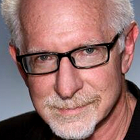 Focus on your audience
Focus on your audience
Social media is about having a conversation?
“A conversation, or even holding a mirror up to the audience; reflecting them.” His advice is to make it more about your listeners than about your station: “When you think about why people got on social media to begin with, it wasn’t to interact with radio stations. It was to interact with each other, and to share stories, pictures, and all that stuff.”
Be people’s trusted guide
How do you think radio should attract a new generation of listeners?
“Give them what they want. In order to figure out what they want, you have to ask them. I don’t think that all answers are in research, but it’s always a good beginning. What can radio provide that they can’t get from Spotify or Pandora? Research tells us that music discovery is really important. We all like people to take us by the hand and go: Hey! There’s a great new club in town that you should try, or: Here’s a new band that I think you’re going to like. Or give them a discovery tool so they can find these things on their own.” Apart from being a guide, Jacobs advises stations with a young audience to have personalities who actually feel like being a part of this generation. And featuring local content is better than being a syndication vehicle.
“Every radio market is about
2/3rd as big as it used to be”

American radio stations have less resources due to the economy and consolidation (photo: Flickr / taxrebate.org.uk)
Feature new music online
Talking about music discovery, program directors often say: when I’m playing new music, listeners may tune out. They don’t know these songs; they want to hear the hits.
“If you and I were having this conversation 20 years ago, I wouldn’t have any good answers for you. There are a lot of different things you can do now. We have to sound great on air and put out a product that will appeal to a lot of different people, but we have all these other aspects that we can use to support the music discovery process. I think what you have to do is use your digital resources. You can’t play everything on air and stay in business; you do have to play the hits, but you can certainly use your website or create a music discovery app.”
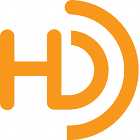 Offer specialized brand extensions
Offer specialized brand extensions
You guys have HD Radio, so a station like Z100 could create a second FM channel for new music, say ‘Z100 Brand New’, on the same frequency?
“We could, if we actually got behind HD Radio. That’s another Pandora’s box, no pun intended.” Fred Jacobs speaks of a serious radio industry controversy between believers who want to create highly specialized, narrowly focused, well-defined additional channels, and those who call HD a boondoggle.
Make new platforms interesting
While broadcasters initially welcomed HD Radio as an answer to satellite radio, they didn’t create good content: “Most HD2s and HD3s in the States are like 200 songs in a box. They’re not programmed; just sort of thrown out there.” Many stations don’t invest in technologies that don’t deliver immediate returns, since the economic downturn and (as a result) revenue decline. So, while radio still gets about 7% of ad spends in the US, almost every market is about 2/3rd as big as it used to be in terms of advertising dollars: “That’s had a big impact on staffing, marketing, research, and so on. Just at the time when radio needed to invest even more into its content, it has invested less.”
“I don’t think the government here is
going to save radio as we know it”
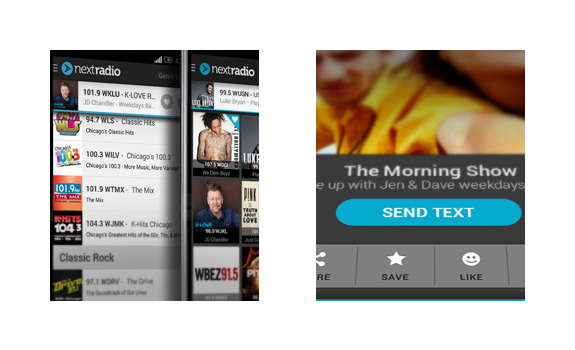
Radio might have to find its own way, through digital innovations such as smartphone apps (images: NextRadio)
Contribute to radio’s reinvention
So how to get out of this situation?
“Hahaha. It’s kind of a polar ice cap situation. Every year, it’s shrinking.”
And the water is rising…
“We keep trying to stay above it, but that’s exactly right. It’s a really challenging situation. As changes are happening so quickly and the disruption is so wide spread, it’s like trying to fix an airplane while it’s flying at 35.000 feet.” Mentioning Amazon.com CEO Jeff Bezos who bought The Washington Post in 2013 to revive the classic newspaper model, Jacobs thinks that “it might take a radical situation where a Google or an Amazon would buy an iHeart Media and go: let’s throw off the rules and the way it’s always been done, and let’s try certain different things.”
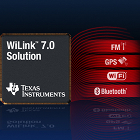 Keep radio interesting & relevant
Keep radio interesting & relevant
What about changing the rules of the game – undoing the possibility that a company can own hundreds of stations – and go back to live & local?
“I don’t think the government here is going to save radio as we know it by helping them via legislation”, he says, referring to a failed attempt to mandate FM chips in cell phones. (Apple’s popular iPhone, for example, doesn’t come with a chip for terrestrial radio.)
Get radio on mobiles
Fred Jacobs has more faith in radio industry innovations like NextRadio, a smartphone app that allows you to let people listen to and connect with you on their smartphone. Another development is that major US radio operators will probably have to divest by selling some of their properties. “Coming back to your point, Alpha Media is a company that many look at. There’s a belief in the local marketplace, and there are some indications that smaller broadcasters may be the future – whether that’s a government deregulation thing or something that happens in a more organic way. People care about their communities. They may enjoy national talents, like a David Letterman, but What’s going on right here, right now? means a lot.”
“Do things with a mobile device
that you can’t do on the air”
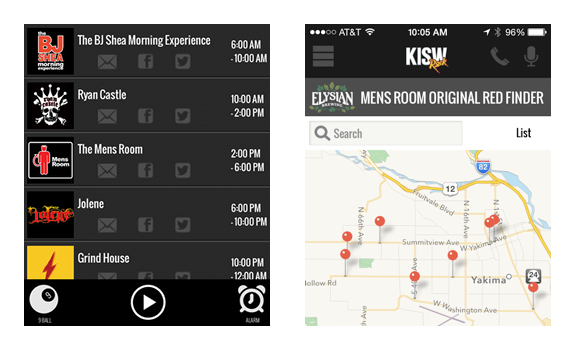
The KISW mobile app is an example of a less standard smartphone application for radio stations (images: jacAPPS)
Be visible on screens
You do a lot of research, including your annual TechSurvey, which is really interesting. Could you share some insights about how young people are using radio and other media?
“Right now, young people seem to be more interested in new phones than in new clothes. Technology trumps fashion. When you talk to an 18-year-old, it is about their mobile device, and it is about their social presence. The phone is really a connection point. That’s how people communicate their entire lives to one another; where they are; what they’re doing; what they’re feeling. If radio is to be relevant for young people, the mobile strategy is critical important. I think mobile and social are it.” Instead of just having a smartphone app, he feels like radio professionals should ask themselves a more important question: “What can you do on a mobile device, related to your brand, that is meaningful? There’s a gazillion apps out there. What is there about your app that makes it special, fun and buzz-worthy?” To help clients create a good app, Jacobs Media has a separate division called jacAPPS (also written as: jācapps).
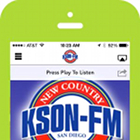 Crowdsource listener-generated content
Crowdsource listener-generated content
What should be in a radio app to engage the audience?
Speaking of version 4 of their own app, he expects that its so-called Open Mic feature will become popular. “Users can record a shout-out or a comment of up to 30 seconds in good quality, and send it directly to the radio station. So you can augment your programming with the voices of listeners. Social sharing is another big part of the platform.”
Enhance people’s listening experience
Client station 99.9 FM KISW (‘The ROCK Of Seattle’) has an app with a special feature for the afternoon show The Men’s Room. As the show has its own branded beer; Men’s Room Red, the app includes The Beer Finder. It’s a location-based, interactive map of where to find this unique beer in Seattle. The station makes money from it, and also donates a part to charity. “It’s a way to do things with a mobile device that you can’t do on the air or even with a website.” In January 2015, jacAPPS announced a partnership with XAPPmedia, hoping to connect (radio) advertisers with mobile streams. Jacobs’ company is also looking to link apps with indoor positioning system beacons in public places, which (unlike GPS) are able to track a consumer’s vertical location (like a floor level). Fred Jacobs agrees that while these technologies offer new possibilities for radio revenue through location-specific ads, they also remind us of George Orwell’s 1984:
[audio:http://www.radioiloveit.com/wp-content/uploads/fred-jacobs-jacobs-media-jacapps-interview-01.mp3|titles=Fred Jacobs about radio apps with geo-targeted ads]





We currently use Jacob Media’s app and it’s great. Our stations are involved in social media and have seen it grow significantly over the past year. Whether it’s Facebook, Twitter, Snap Chat or our online listening stream, the amount of likes, followers and listeners keeps increasing at an incredible rate.
The challenge is focusing it locally, so that we can grow our local (rated) audience and increase listening and revenue locally.
We currently have almost 470,000 likes on FB and many of our posts reach tens of millions of people, but the % from within our market area is minor. We also enjoy a lot of online listening via the online stream or app, but again, the amount from within our listening area is minor.
Any tips on how to focus our efforts to drive more local engagement?
Thanks!
Michael